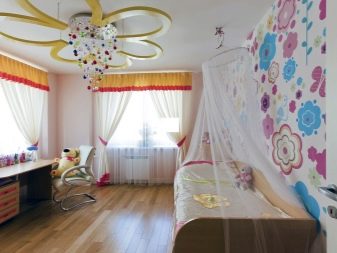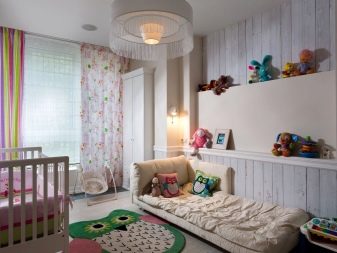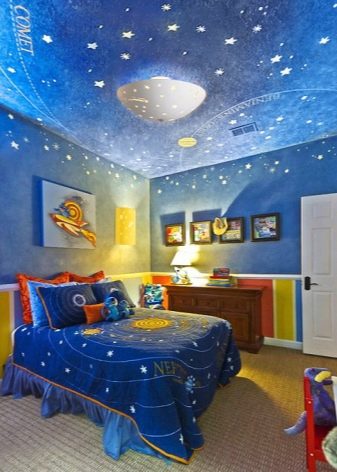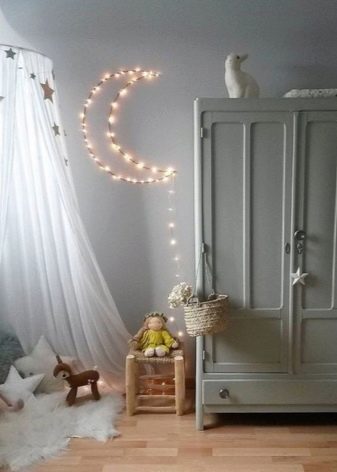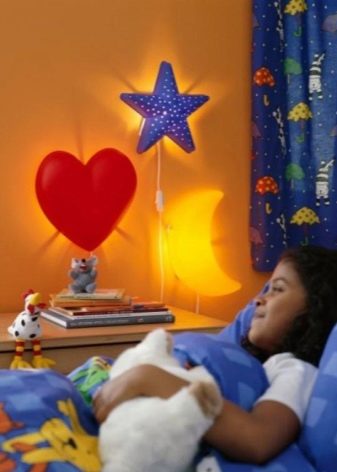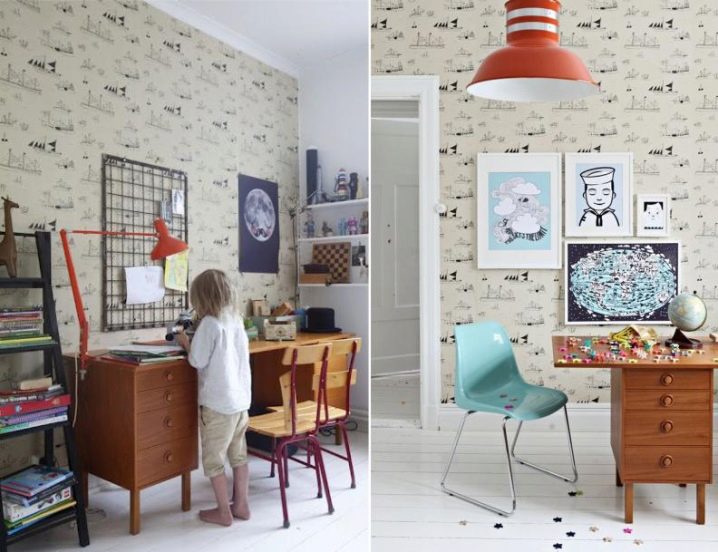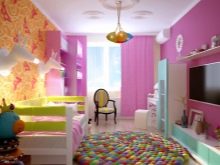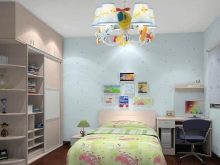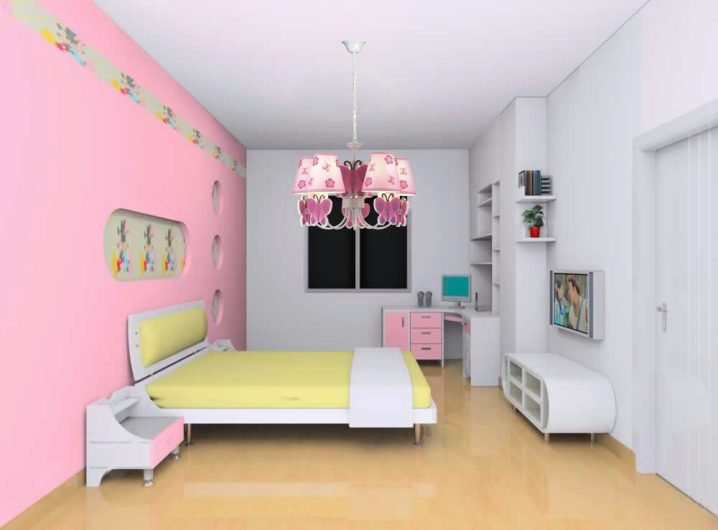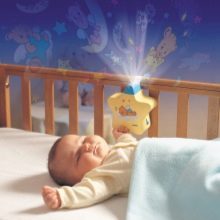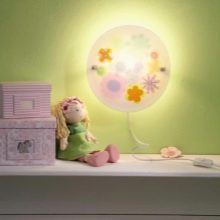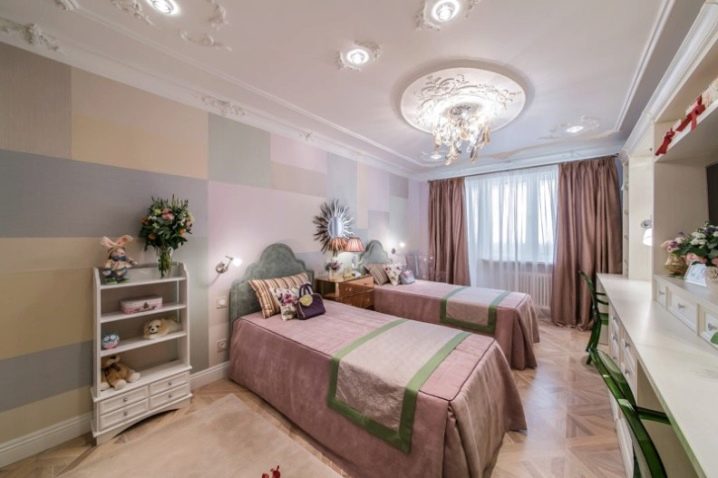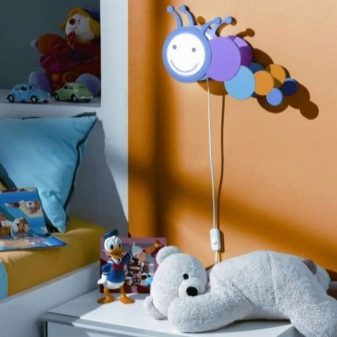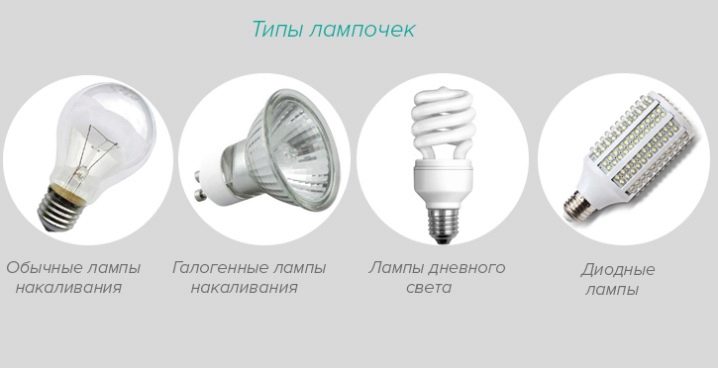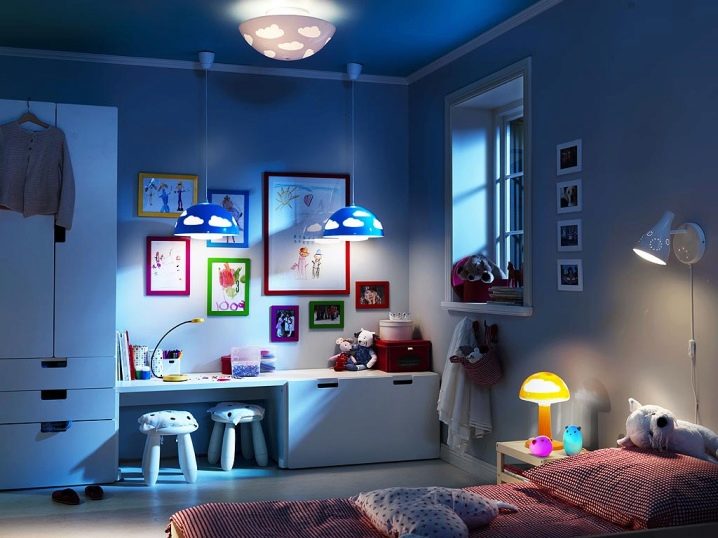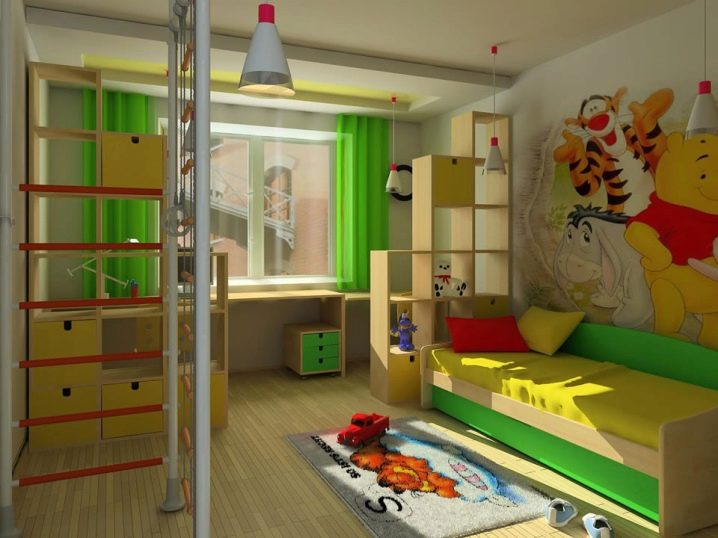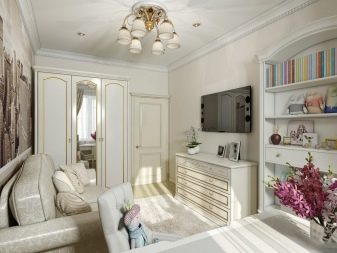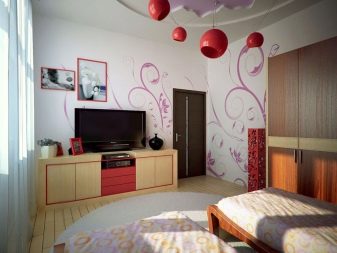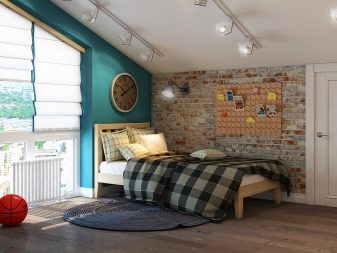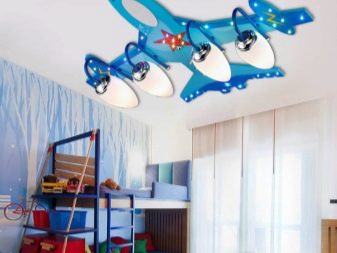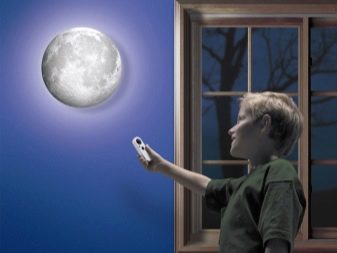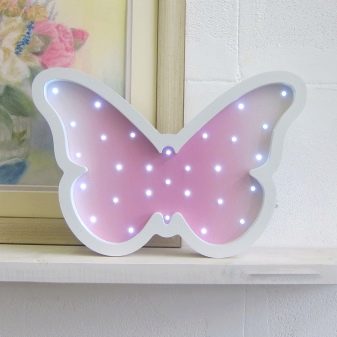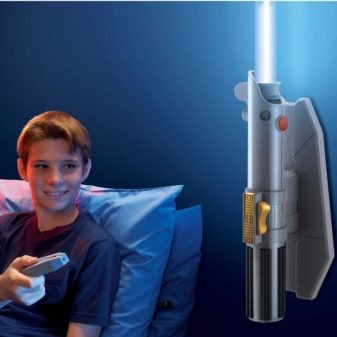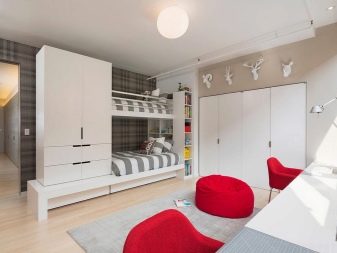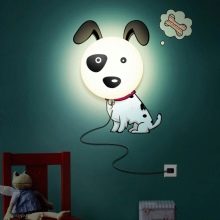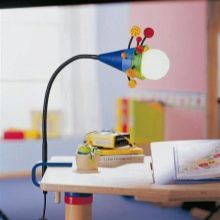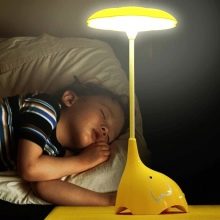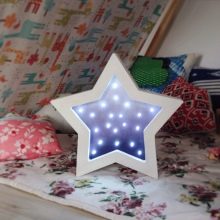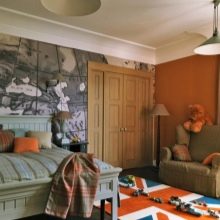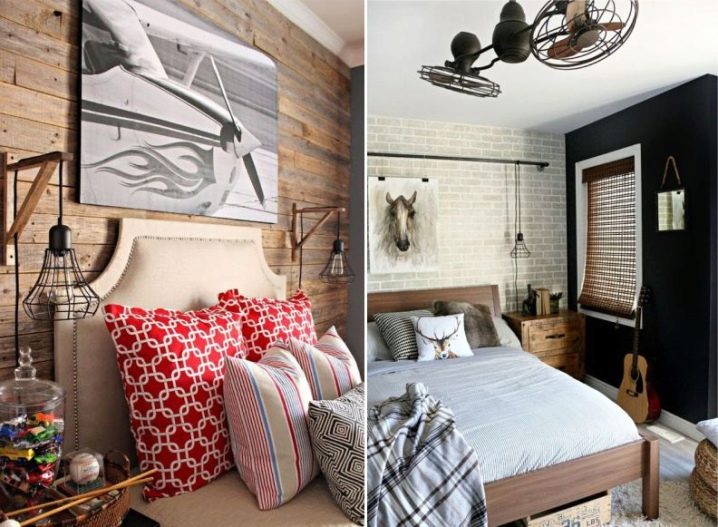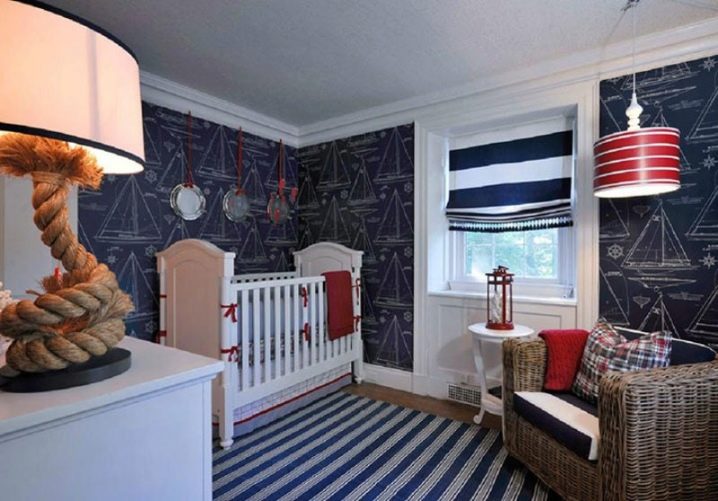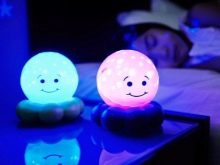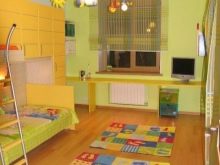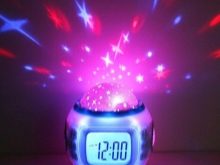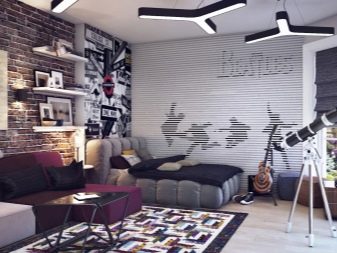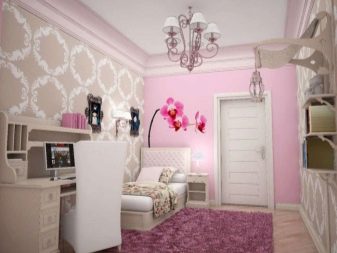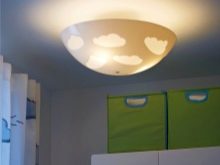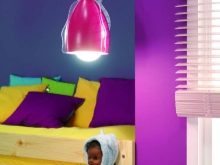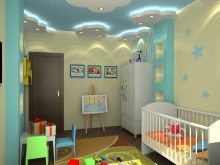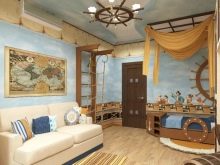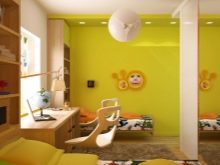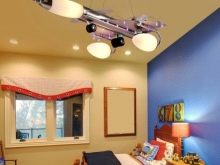Children's lamps
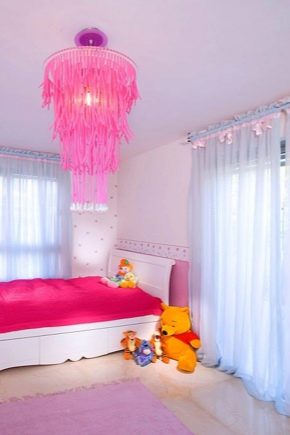
Children - the best that is in life. From the moment of birth, we try to provide them with the best possible conditions for growth and development, not forgetting about children's health. A lot of attention is paid to lighting the room so that the child’s eyes do not suffer from a lack of light or excessive brightness.
Today there is a large variety of models of children's lamps, which is easy to get confused. In fact, the classification is not so difficult, so everyone can afford the purchase.
Special features
Children's lamps - lighting for the room, the purpose of which is to illuminate a specific area.This may be a minimal zone or a room as a whole. The children's line of models has significant differences from the fixtures chosen in other rooms of the dwelling. This is a special lamp with a thoughtful design of children's themes, creating a relaxing atmosphere.
They are not just the usual light bulbs in a beautiful design: it is a huge world of childhood, transmitted through the form and color.
The distinctive features of children's lamps include:
- Variety of color palette - using bright, cheerful colors that set up a child for a positive, creative atmosphere and joyful emotions.
- The uniqueness of the design, thanks to which the lamps become the accents of the room or its final touches.
- A variety of size range, allowing the use of lighting in various types of premises.
- The presence of several varieties, designed for different ways of use (for the main light, the main source gain, backlight).
- Use in models of a wide range of light sources of different powers and temperatures, allowing you to choose the appropriate temperature of the light, as close as possible to the natural.
Types and location options
The main line of children's lamps is manufactured in a mass way - on production equipment. However, if you wish, you can always buy a designer product handmade, professional level of execution.
All existing types of children's lamps are divided into several groups:
- ceiling (chandeliers);
- wall (sconce, decorative, models in the socket, cot);
- table (desk lamps, floor lamps and night lamps);
- floor (night lamps and floor lamps).
Each type of luminaire is distinguished by the intensity of the luminous flux, its softness, dispersion and the time of application. Any of them combines two loads: decorative and main (lighting).
The lamp is chosen in such a way as not to hit the child’s eyes with light and to cause positive emotions by appearance.
Ceiling lamps - the main upper light, which largely determines the visual acuity (the more correctly they are chosen, the less eye strain). Additional lighting is important in the evening, on an overcast day and at night, when another light source is needed. It is also necessary for better illumination of the working area of the desk when the child is doing homework or engaged in creative work.
Devices for additional lighting were originally invented for adults: sconce comfortable in the evening - for reading books before bedtime, night lights save parents from repeated on and off of the bright light at night. Moms and dads do not have to go to the baby to check his condition.
Nightlights are divided into wall and bedside, which can be fixed on the wall, the side wall of the crib (models on a clothespin, mobil-carousel).
Projectors they are remarkable in that they can be located anywhere in the room and are often equipped with a dimmer and motion detector.
It is a mistake to think that nightlights save a child from fear of the dark. It is these devices that provoke its appearance, being used daily to create a relaxing atmosphere in the room. Constant lighting of the room is returning to normal, because darkness is associated with discomfort.
Recessed Spotlights more often they are elements of design, supporting the general idea. Such devices provide sufficient lighting only if there are several, and each has the necessary power.
By type of food, children's luminaires are stationary or working frombatteries. The models differ from each other in the type of switch that can be:
- cord;
- sensor;
- Dimmer;
- button (on the case or wire).
Different lamps and the type of lamps.
They may have a light source in the form of a lamp:
- incandescence;
- LED;
- halogen;
- luminescent;
- sensory
Each light source has its pros and cons.
For example, incandescent lamps during operation heat up, react to humidity and temperature. Fluorescent bulbs are the most harmful, in the process they emit mercury, they are more susceptible to frequent switching on and off and quickly burn out. LEDs have a minimum power consumption and are considered safe (they do not emit toxins when switched on), they shine evenly, without flickering.
Styles and themes
Children's lamps - unique design techniques. With the right choice, they are able to fit into almost any style of interior inherent in children's age. The main thing to rely on is the age and tastes of the child (including color preferences and themes).
Lamps for children are chosen thoroughly, otherwise on the general background they will be an inappropriate spot that breaks the idea of design into separate isolated parts.
There are a lot of variants of style decisions.
The most harmoniously these products look in styles:
- classic;
- modern;
- boho;
- kitsch;
- loft;
- manga;
- pop Art;
- nautical.
Interesting and design themes. Like analogs for adults, any model is subject to a common idea, of which there are many. Based on the child’s age, modern lamps for children are produced not only in a classic design: they are all kinds of:
- space objects (ships, rockets, UFOs);
- heavenly bodies (Sun, Moon, month, stars);
- airplanes and cars;
- elements of ships (steering wheel, sail, and so on);
- flower and summer compositions (butterflies, flowers, birds);
- children's toys (characters of favorite fairy tales and cartoons);
- geometric shapes (for teens and model projectors);
- natural phenomena;
- Star Wars themes.
Any such product transforms the room, but almost always needs support through other interior items.
Forms
A distinctive feature of children's lamps is a streamlined shape. They can be small, compact, standard medium or large sizes, but manufacturers always tend to round edges and minimize sharp details.
Forms of lamps are different and are divided into classic and non-standard options.
The first are strict models with a minimum of decor (ceiling lamps in the form of a ball, bell, prism, cylinder).
The second options are more diverse, and more often it is a non-standard approach to design. These are various models of a single plan or spotlights that make up a single composition (for example, the sky with clouds and the sun, space).
If it is conditional to divide models by types, the form:
- night lights in the outlet tends to be round or oval (even if the design looks like a toy);
- models in the crib resembles a circle or a star (mobiles or stars on the side wall);
- projectors are similar to a volumetric circle, a cylinder, a hemisphere, an arc (turtles, elephants, butterflies, snails, a rainbow, and so on);
- table lamps are very different, but tends to be spherical, trapezoid, cone-shaped;
- Ceiling - cylindrical, round, oval.
Materials
In modern production of children's lamps different raw materials are used.
The most popular materials of manufacture are:
- metal;
- plastic;
- plastic;
- polymer;
- tree;
- glass;
- paper;
- the cloth.
The choice of material is very important. For example, plastic and plastic when heated lamps emit harmful substances into the air. The glass should be frosted and sufficiently dense, resistant to mechanical damage. Paper is not durable, fragile ceramics.
The best options for raw materials are metal and wood (for wall and ceiling structures), fabric (night-light projectors in the form of soft toys).
Lighting rules
To the lamp does not harm the eyes, it is important to choose the right intensity of the light flux and its temperature. Depending on this, you can vary the number of lamps in the room: sometimes there can be two or more, although in most cases one main and additional one is enough.
When buying, it is worth considering a few factors that simplify the choice of children's luminaire:
- temperature shade should be as close as possible to natural light (indicated in Kelvin);
- the color of the light flux is preferable soft, warm (figure - 4000 K or moderately warm - 4500 K);
- yellow tone harms the eyes, dispels attention (2700-3500 K);
- cold tone makes the eyes adapt, it does not create a relaxing atmosphere (more than 5000-6000 K).
You should not choose lamps with an abundance of blinking colored lights: their eyes get tired and start to hurt. Invalid red or blue color.
Lighting should be soft, uniform. If it is an additional light source, it should ideally fall under the tone of the main light flux.
Which is better to choose a room?
When buying a children's lamp, it is important to consider that it must be safe, made of durable material and having the “right” type of light source.
A good lamp in a child’s room is:
- a model expressing a general design idea in soft, rich colors is not the cheapest and is not particularly expensive;
- a product with LEDs that do not heat up during continuous operation, or a touch option (relevant for a night light);
- if it is a night light, then it is equipped with adjustable light intensity and equipped with a pleasant soundtrack with melodic relaxing music (ideally, with the possibility of audio recording and playback);
- if the ceiling model, then of the three elements, with a standard type of base and the minimum power of each lamp - 60 W;
- if the projector, then with a small set of colors and the possibility of fixed projection (less tired eyes);
- model with a good diffuser of light flux (black, dark tones of a plafond and saturated colors are unacceptable: red, dark blue, poisonous orange, acid green);
- a product of a specific subject for a girl or boy or a universal variant (if there are twins in a family or a teenage child);
- functional device on the ceiling, wall or table, with reference to the age of the child (for an infant, schoolchild, student).
Original ideas for a fashionable children's interior.
Properly selected children's lamp - the basis of the design of the room, for example:
- universal hemisphere with clouds relevant in any room, regardless of style;
- the model in the form of a fairy-tale fairy is good in the interior of the girl's room, for greater harmony has support in the form of decorative pillows
- Spotlights on the entire surface of the ceiling in the form of cloudy zones are relevant for children of any gender and a room filled with the sun, but they will not do without additional lighting;
- the lamp in the form of a steering wheel with white shades looks good in the interior of the marine theme, in the boy's room;
- ball model in the tone of the furniture or the ceiling fits perfectly into the interior room of twin adolescents;
- The airplane version is relevant for a boy of any age, he brings into the room a special spirit of conquering the heavenly peaks.
Features of the selection of children's night light, see the following video.
